Practical Model for Metamaterials in Wireless Power Transfer Systems
Abstract
1. Introduction
2. Practical Model for Low-Frequency Metamaterials
2.1. Lumped Impedance Parameters of the MTM Unit
2.2. Q-Based Design Theory in the MTM Slab
2.3. Analysis of MTM-Enhanced WPT System
3. Experimental Verification
3.1. Permeability Measurement
3.2. Experimental Verification of the MTM-Enhanced WPT System
4. Discussion
5. Conclusions
Author Contributions
Funding
Acknowledgments
Conflicts of Interest
References
- International Commission on Non-Ionizing Radiation Protection. Guidelines for limiting exposure to time-varying electric, magnetic, and electromagnetic fields (up to 300 GHz). Health Phys. 1998, 74, 494–522. [Google Scholar]
- Veselago, V.G. The electrodynamics of substances with simultaneously negative values of ε and μ. Sov. Phys. Usp. 1968, 10, 509–514. [Google Scholar] [CrossRef]
- Li, Z.; Huang, R.; Kong, L. Permeability and resonance characteristics of metamaterial constructed by a wire coil wound on a ferrite core. J. Appl. Phys. 2009, 106, 103929. [Google Scholar] [CrossRef]
- Pendry, J.B. Manipulating the near field with metamaterials. Opt. Photon. News. 2004, 15, 32–37. [Google Scholar] [CrossRef]
- Pendry, J.B. Negative refraction makes a perfect lens. Phys. Rev. Lett. 2000, 85, 3966–3969. [Google Scholar] [CrossRef]
- Alekseev, G.V.; Lobanov, A.V.; Spivak, Y.E. Optimization method in problems of acoustic cloaking of material bodies. Comput. Math. Math. Phys. 2017, 57, 1459–1474. [Google Scholar] [CrossRef]
- Shelby, R.A.; Smith, D.R.; Schultz, S. Experimental verification of a negative index of refraction. Science 2001, 292, 77–79. [Google Scholar] [CrossRef]
- Pendry, J.B.; Holden, A.J.; Robbins, D.J.; Stewart, W.J. Magnetism from conductors and enhanced nonlinear phenomena. IEEE Trans. Microw. Theory Tech. 1999, 47, 1777–1780. [Google Scholar] [CrossRef]
- Leonhardt, U. Optical conformal mapping. Science 2006, 312, 2075–2084. [Google Scholar] [CrossRef]
- Engheta, N.; Ziolkowski, R.W. A positive future for double-negative metamaterials. IEEE Trans. Microw. Theory Tech. 2005, 53, 1535–1556. [Google Scholar] [CrossRef]
- Wang, B.; Teo, K.H.; Nishino, T.; Yerazunis, W.; Barnwell, J.; Zhang, J. Experiments on wireless power transfer with metamaterials. Appl. Phys. Lett. 2011, 98, 254101. [Google Scholar] [CrossRef]
- Urzhumov, Y.; Smith, D.R. Metamaterial-enhanced coupling between magnetic dipoles for efficient wireless power transfer. Phys. Rev. B Condens. Matter 2011, 83, 205114. [Google Scholar] [CrossRef]
- Zhao, Y.; Vutipongsatorn, V.; Leelarasmee, E. Improving the efficiency of wireless power transfer systems using metamaterials. In Proceedings of the 10th International Conference on Electrical Engineering/Electronics, Computer, Telecommunications and Information Technology, Krabi, Thailand, 15–17 May 2013; pp. 1–4. [Google Scholar]
- Zhao, Y.; Leelarasmee, E. Controlling the resonances of indefinite materials for maximizing efficiency in wireless power transfer. In Proceedings of the International Electrical Engineering Congress, Chonburi, Thailand, 19–21 March 2014; pp. 1–4. [Google Scholar]
- Huang, D.; Urzhumov, Y.; Smith, D.R.; Teo, K.H.; Zhang, J. Magnetic superlens-enhanced inductive coupling for wireless power transfer. J. Appl. Phys. 2012, 111, 064902. [Google Scholar] [CrossRef]
- Lipworth, G.; Ensworth, J.; Seetharam, K.; Huang, D.; Lee, J.S.; Schmalenberg, P.; Nomura, T.; Reynolds, M.S.; Smith, D.R.; Urzhumov, Y. Magnetic metamaterial superlens for increased range wireless power transfer. Sci. Rep. 2014, 4, 3642. [Google Scholar] [CrossRef]
- Ranaweera, A.L.A.K.; Duong, T.P.; Lee, J.-W. Experimental investigation of compact metamaterial for high efficiency mid-range wireless power transfer applications. J. Appl. Phys. 2014, 116, 043914. [Google Scholar] [CrossRef]
- Ranaweera, A.L.A.K.; Duong, T.P.; Lee, B.-S.; Lee, J.-W. Experimental investigation of 3D metamaterial for mid-range wireless power transfer. In Proceedings of the IEEE Wireless Power Transfer Conference, Jeju, Korea, 8–9 May 2014; pp. 92–95. [Google Scholar]
- Rajagopalan, A.; RamRakhyani, A.; Schurig, D.; Lazzi, G. Improving power transfer efficiency of a short-range telemetry system using compact metamaterials. IEEE Trans. Microw. Theory Technol. 2014, 62, 947–955. [Google Scholar] [CrossRef]
- Algarin, J.M.; Freire, M.J.; Lopez, M.A.; Lapine, M.; Jakob, P.M.; Behr, V.C.; Marqués, R. Analysis of the resolution of split-ring metamaterial lenses with application in parallel magnetic resonance imaging. Appl. Phys. Lett. 2011, 98, 014105. [Google Scholar] [CrossRef]
- Alu, A.; Engheta, N. Pairing an epsilon-negative slab with a mu-negative slab: Resonance, tunneling and transparency. IEEE Trans. Antennas Propag. 2003, 51, 2558–2571. [Google Scholar] [CrossRef]
- Wang, G.; Liu, W.; Sivaprakasam, M.; Kendir, G. Design and analysis of an adaptive transcutaneous power telemetry for biomedical implants. IEEE Trans. Circuits Syst. I Reg. Papers 2005, 52, 2109–2117. [Google Scholar] [CrossRef]
- Hui, S.Y. Planar wireless charging technology for portable electronic products and Qi. Proc. IEEE 2013, 101, 1290–1301. [Google Scholar] [CrossRef]
- Ho, J.S.; Yeh, A.J.; Neofytou, E.; Kim, S.; Tanabe, Y.; Patlolla, B.; Beygui, R.E.; Poon, A.S.Y. Wireless power transfer to deep-tissue microimplants. Proc. Nat. Acad. Sci. USA 2014, 111, 7974–7979. [Google Scholar] [CrossRef]
- Mi, C.C.; Buja, G.; Choi, S.Y.; Rim, C.T. Modern advances in wireless power transfer systems for roadway powered electric vehicles. IEEE Trans. Ind. Electron. 2016, 63, 6533–6545. [Google Scholar] [CrossRef]
- Elliott, G.A.J.; Raabe, S.; Covic, G.A.; Boys, J.T. Multiphase pickups for large lateral tolerance contactless power-transfer systems. IEEE Trans. Ind. Electron. 2010, 57, 1590–1598. [Google Scholar] [CrossRef]
- Wiltshire, M.C.K.; Hajnal, J.V.; Pendry, J.B.; Edwards, D.J.; Stevens, C.J. Metamaterial endoscope for magnetic field transfer: Near field imaging with magnetic wires. Opt. Express 2003, 11, 709–715. [Google Scholar] [CrossRef]
- Shamonin, M.; Shamonina, E.; Kalinin, V.; Solymar, L. Properties of a metamaterial element: Analytical solutions and numerical simulations for a singly split double ring. J. Appl. Phys. 2004, 95, 3778–3784. [Google Scholar] [CrossRef]
- Sydoruk, O.; Radkovskaya, A.; Zhuromskyy, O.; Shamonina, E.; Shamonin, M.; Stevens, C.J.; Faulkner, G.; Edwards, D.J.; Solymar, L. Tailoring the near-field guiding properties of magnetic metamaterials with two resonant elements per unit cell. Phys. Rev. B 2006, 73, 224406. [Google Scholar] [CrossRef]
- Smith, D.R.; Schultz, S.; Markos, P.; Soukoulis, C.M. Determination of effective permittivity and permeability of meteamaterials from reflection and transmission coefficients. Phys. Rev. B 2002, 65, 195104. [Google Scholar] [CrossRef]
- Smith, D.R.; Vier, D.; Koschny, T.; Soukoulis, C. Electromagnetic parameter retrieval from inhomogeneous metamaterials. Phys. Rev. E Stat. Phys. Plasmas Fluids Relat. Interdiscip. Top. 2005, 71, 036617. [Google Scholar] [CrossRef]
- Li, W.; Wang, P.; Yao, C.; Zhang, Y.; Tang, H. Experimental investigation of 1D, 2D, and 3D metamaterials for efficiency enhancement in a 6.78 MHz wireless power transfer system. In Proceedings of the IEEE Wireless Power Transfer Conference, Aveiro, Portugal, 5–6 May 2016; pp. 1–4. [Google Scholar]
- Liu, M.; Liu, S.; Ma, C. A high-efficiency/output power and lownoise megahertz wireless power transfer system over a wide range of mutual inductance. IEEE Trans. Microw. Theory Technol. 2017, 65, 4317–4325. [Google Scholar] [CrossRef]
- Das, R.; Basir, A.; Yoo, H. A metamaterial-coupled wireless power transfer system based on cubic high-dielectric resonators. IEEE Trans. Ind. Electron. 2019, 66, 7397–7406. [Google Scholar] [CrossRef]
- Gámez Rodríguez, E.S.; Ram Rakhyani, A.K.; Schurig, D.; Lazzi, G. Compact low-frequency metamaterial design for wireless power transfer efficiency enhancement. IEEE Trans. Microw. Theory Technol. 2016, 64, 1644–1654. [Google Scholar] [CrossRef]
- Chen, W.-C.; Bingham, C.M.; Mak, K.M.; Caira, N.W.; Padilla, W.J. Extremely subwavelength planar magnetic metamaterials. Phys. Rev. B 2012, 85, 201104. [Google Scholar] [CrossRef]
- Gong, Z.; Yang, S. One-dimensional stacking miniaturized low-frequency metamaterial bulk for near-field applications. J. Appl. Phys. 2020, 127, 114901. [Google Scholar] [CrossRef]
- Cummer, S.A.; Popa, B.; Hand, T.H. Q-based design equations and loss limits for resonant metamaterials and experimental validation. IEEE Trans. Antennas Propag. 2008, 56, 127–132. [Google Scholar] [CrossRef]
- Wiltshire, M.C.-C.; Pendry, J.; Hajnal, J.; Edwards, D.J. “Swiss roll” metamaterials—An effective medium with strongly negative permeability. Compon. Exp. Semin. 2003, 13, 1–10. [Google Scholar]
- Cho, Y.; Lee, S.; Kim, D.-H.; Kim, H.; Song, C.; Kong, S.; Park, J.; Seo, C.; Kim, J. Thin hybrid metamaterial slab with negative and zero permeability for high efficiency and low electromagnetic field in wireless power transfer systems. IEEE Trans. Electromagn. C. 2018, 60, 1001–1009. [Google Scholar] [CrossRef]
- Shamonina, E.; Kalinin, V.A.; Ringhofer, K.H.; Solymar, L. Magnetoinductive waves in one, two, and three dimensions. J. Appl. Phys. 2002, 92, 6252–6261. [Google Scholar] [CrossRef]
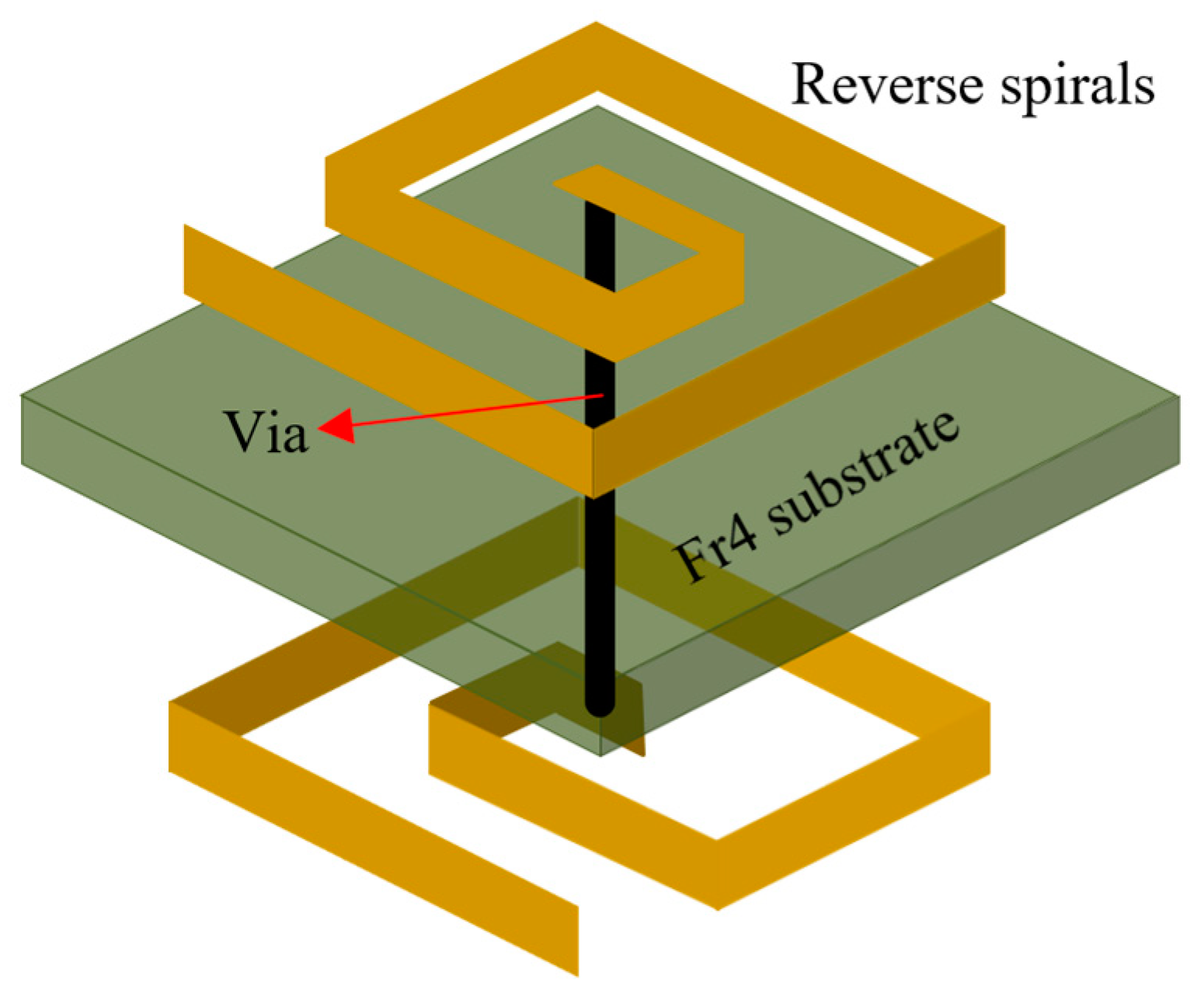
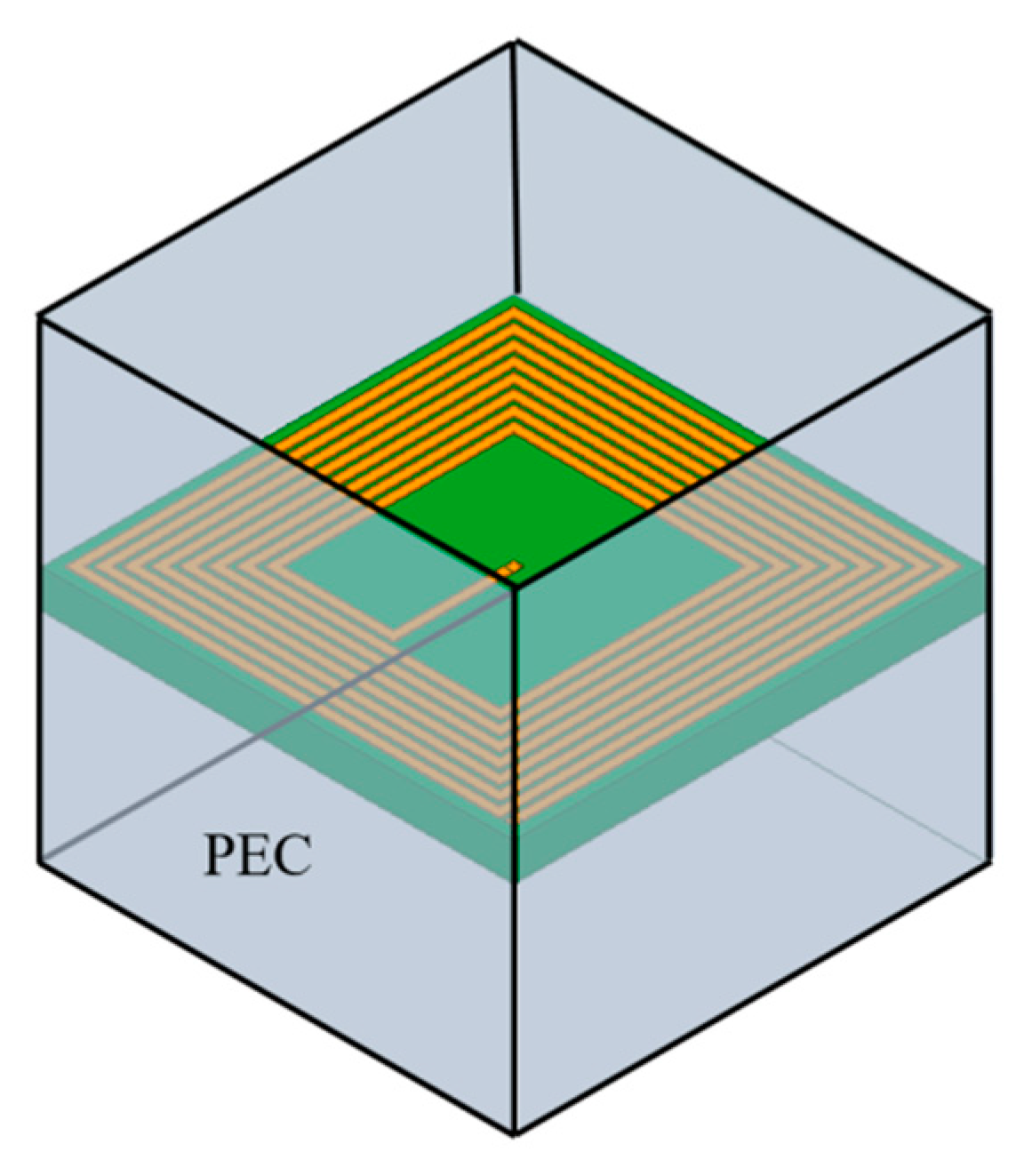
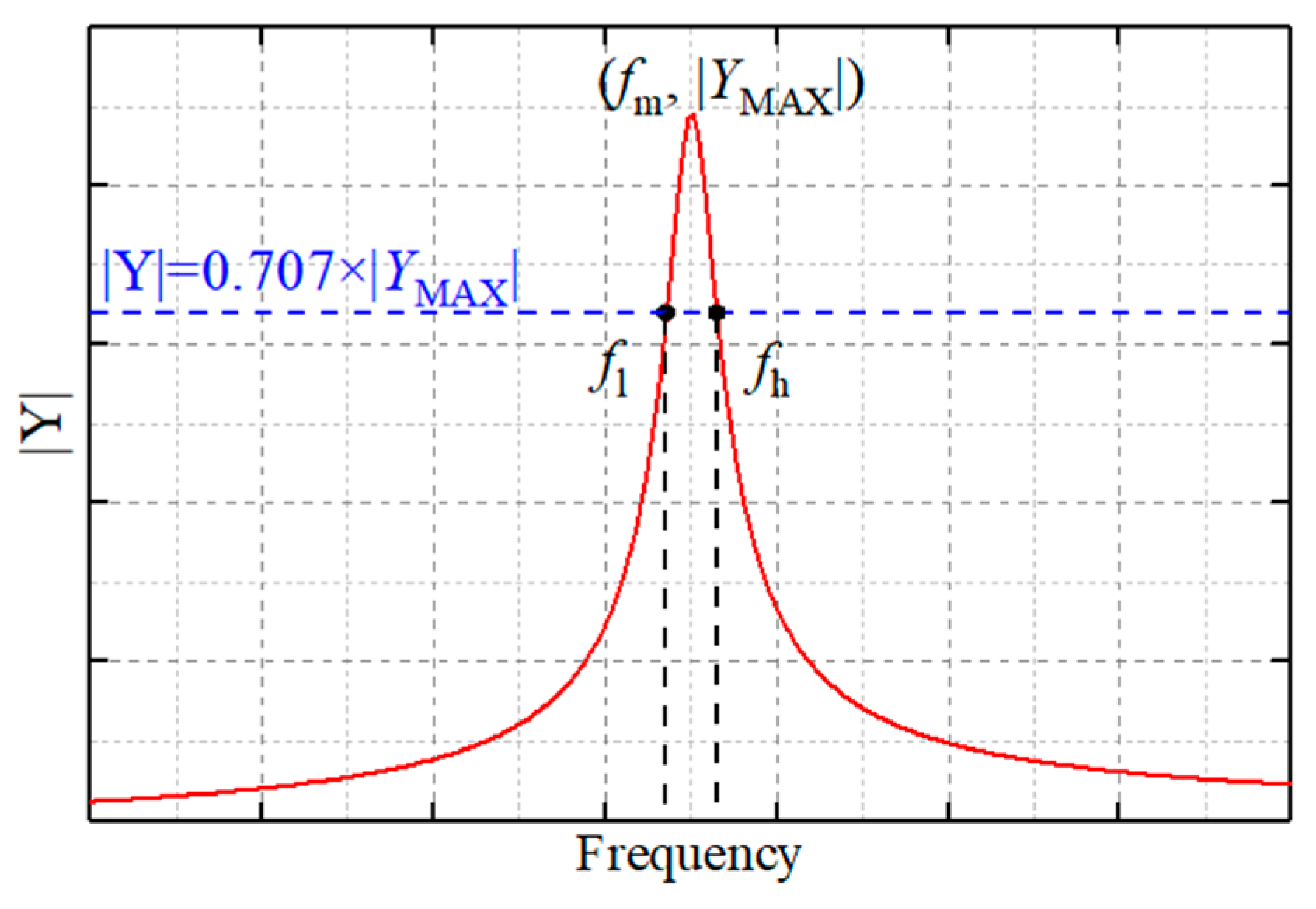
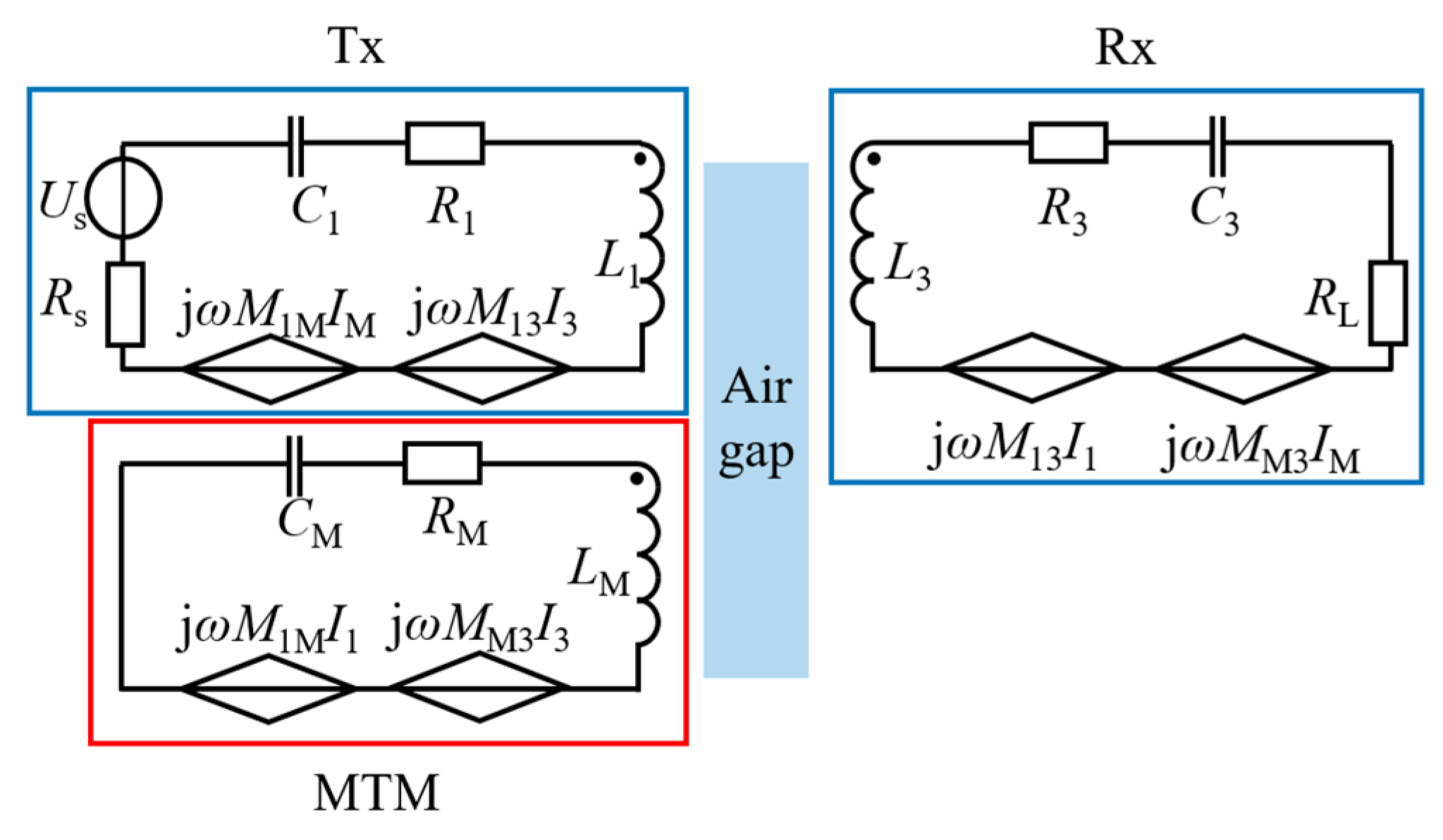

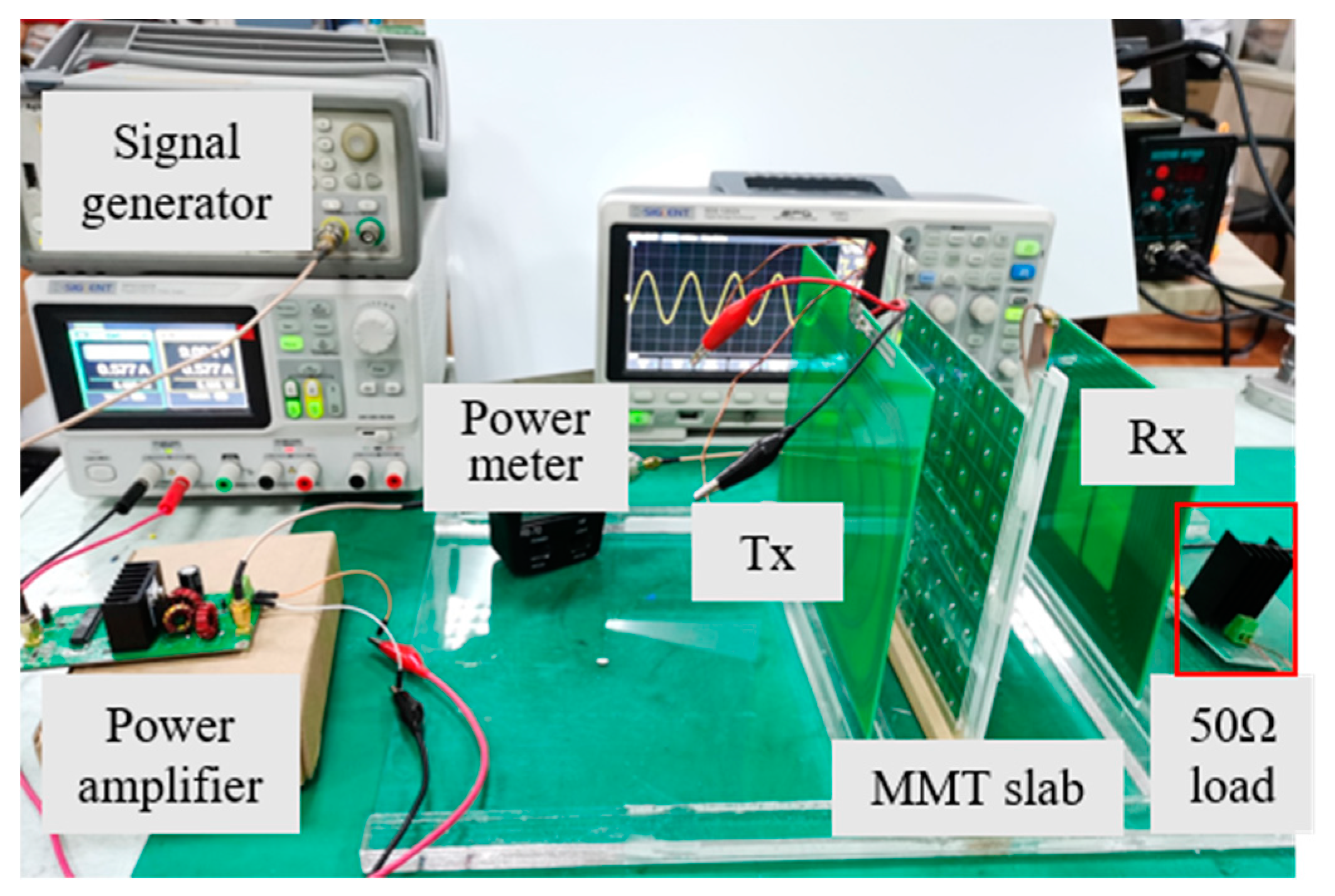
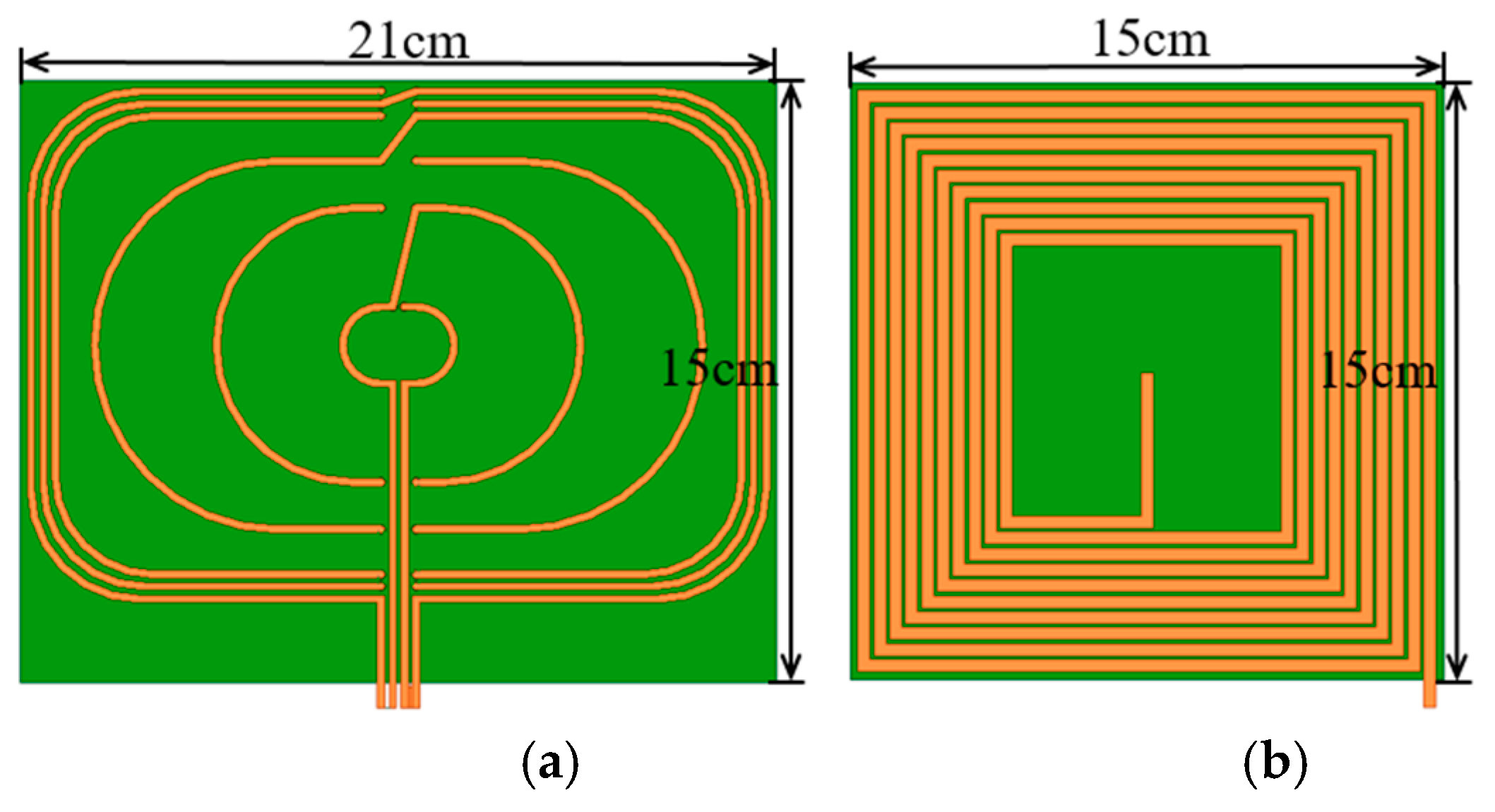
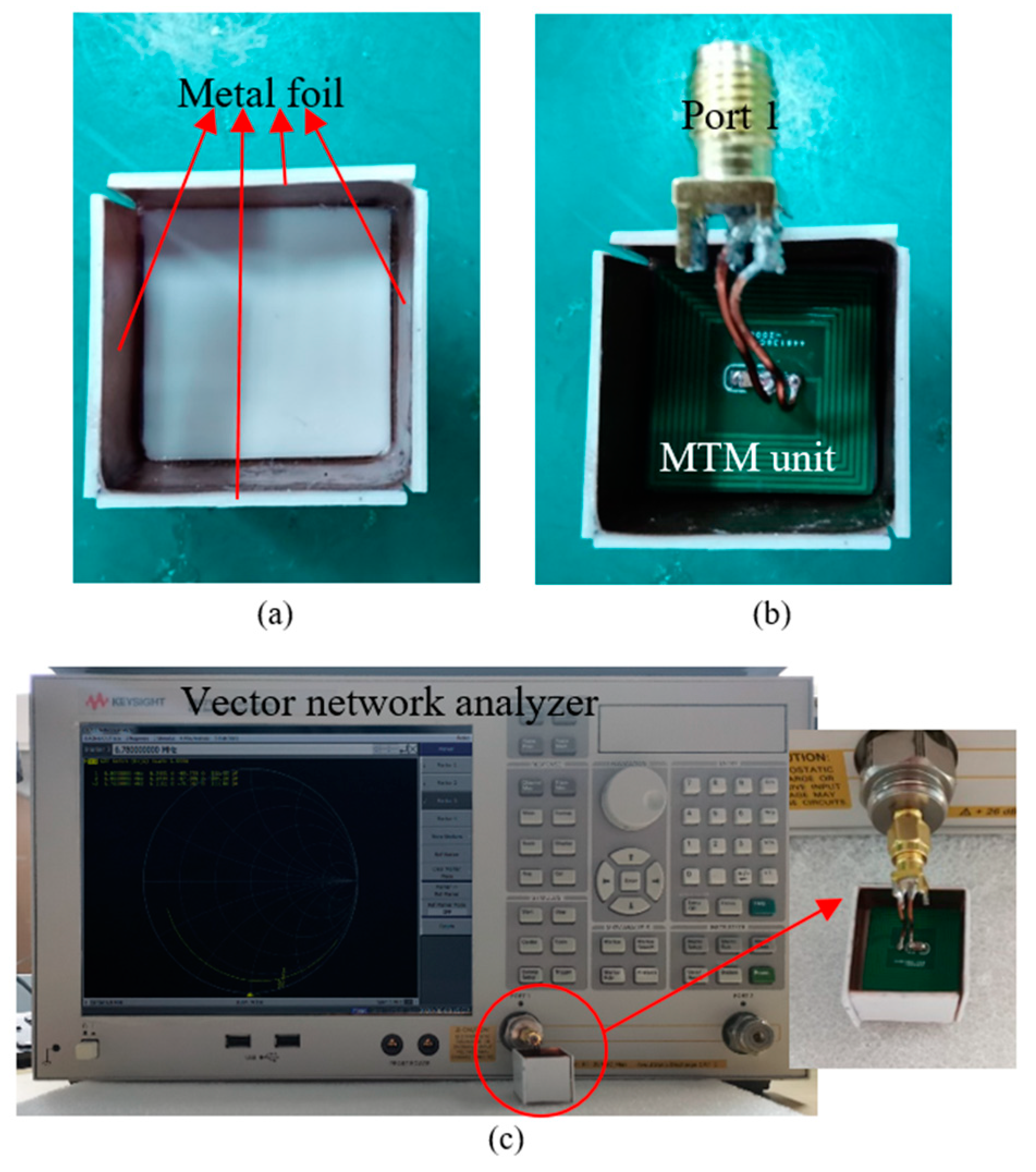
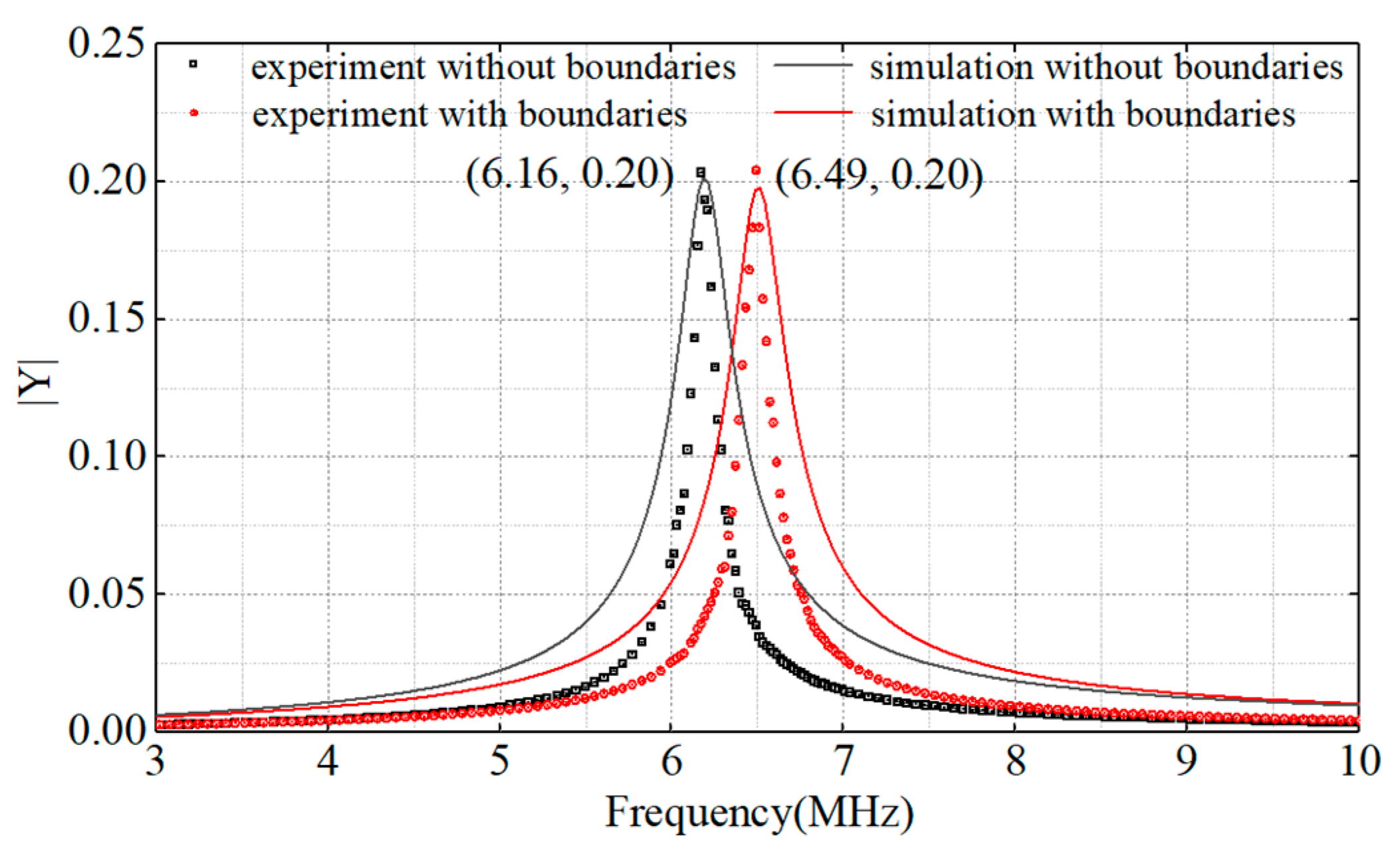
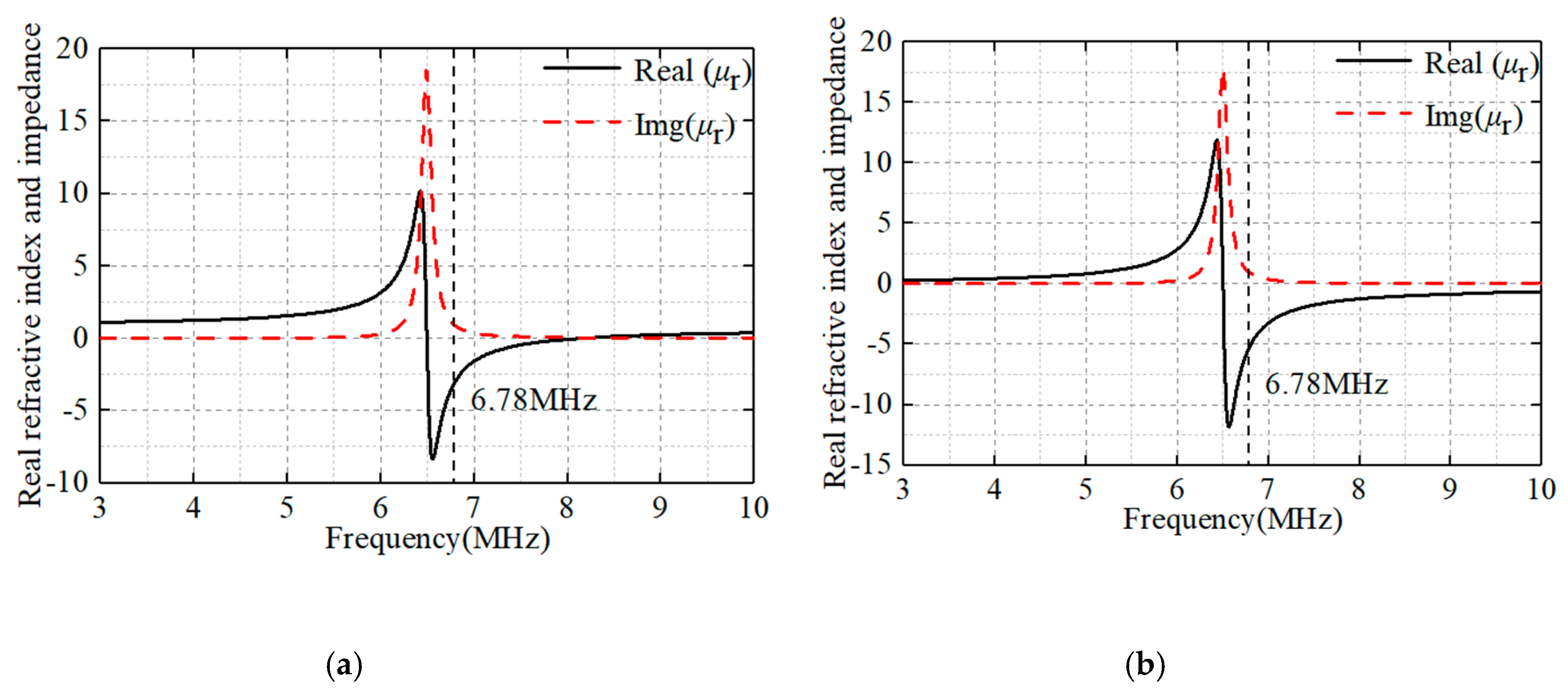

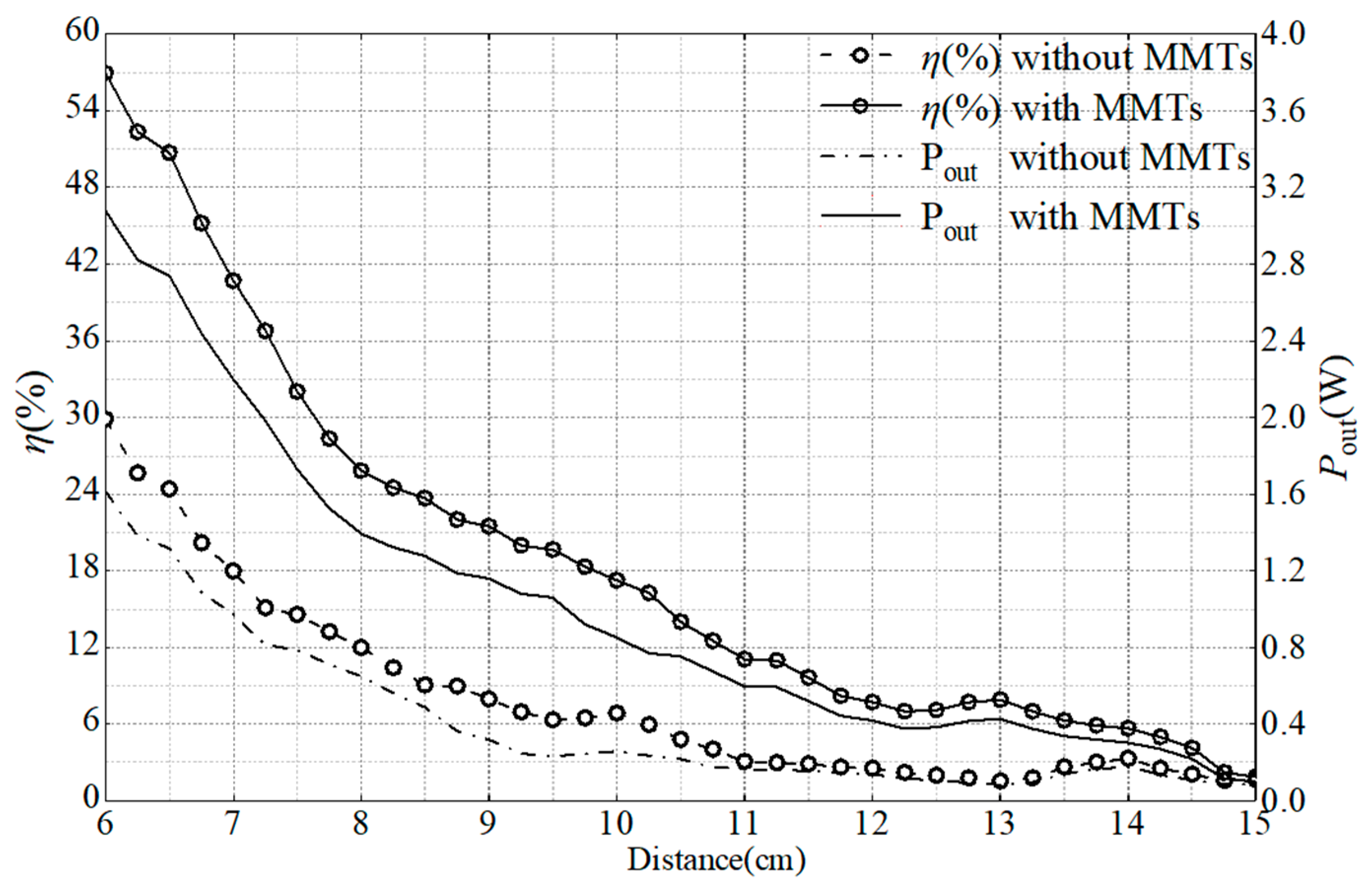
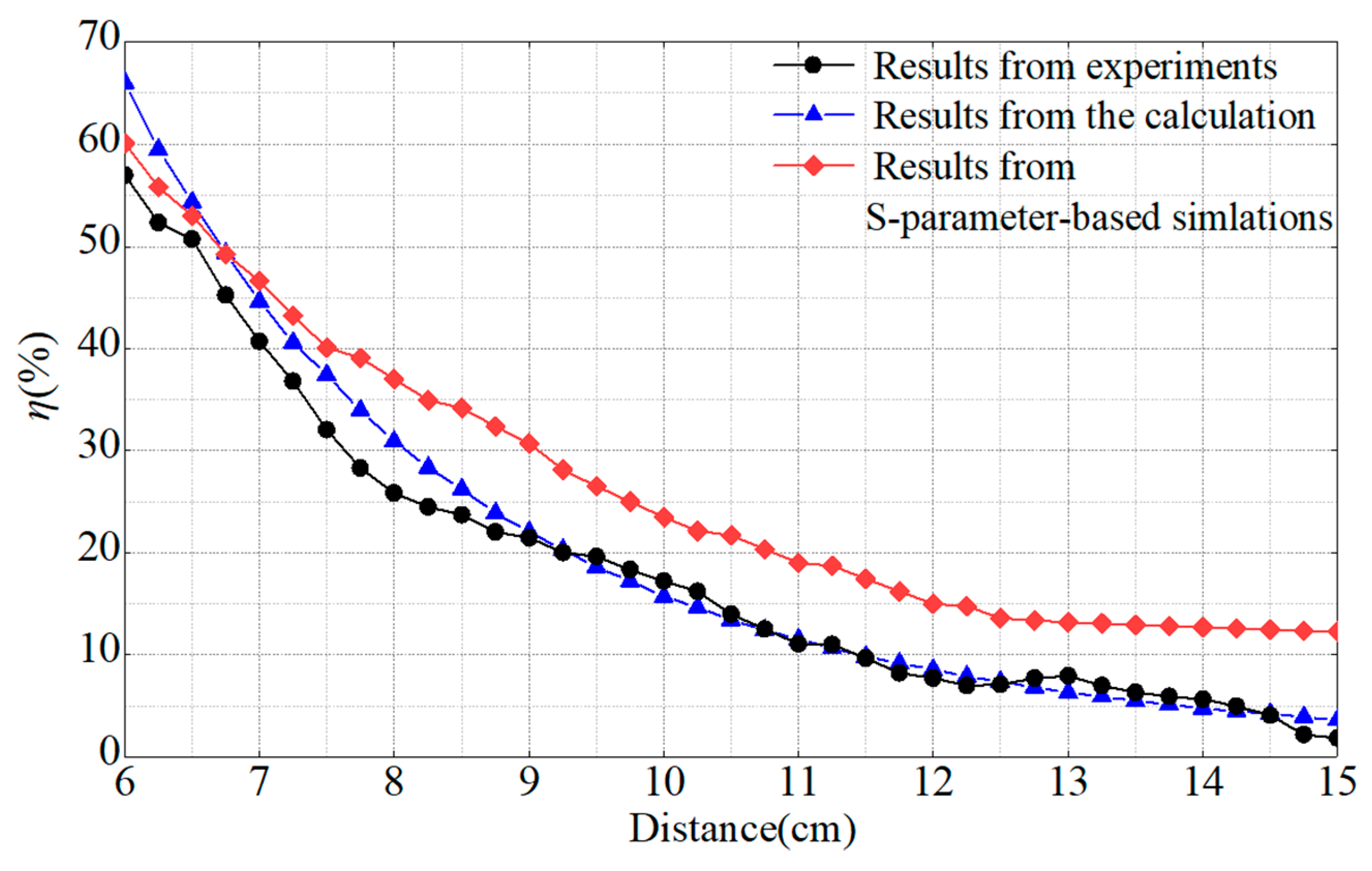
| Parameter | Value | Parameter | Value | Parameter | Value |
|---|---|---|---|---|---|
| R1 | 2.5 | L1 | 4.7 | C1 | 132 pF |
| R3 | 5 | L3 | 26.7 | C3 | 20 pF |
| Rs | 5 | RLeq | 50 | Q2 | 41.66 |
Publisher’s Note: MDPI stays neutral with regard to jurisdictional claims in published maps and institutional affiliations. |
© 2020 by the authors. Licensee MDPI, Basel, Switzerland. This article is an open access article distributed under the terms and conditions of the Creative Commons Attribution (CC BY) license (http://creativecommons.org/licenses/by/4.0/).
Share and Cite
Liu, J.; Gong, Z.; Yang, S.; Sun, H.; Zhou, J. Practical Model for Metamaterials in Wireless Power Transfer Systems. Appl. Sci. 2020, 10, 8506. https://doi.org/10.3390/app10238506
Liu J, Gong Z, Yang S, Sun H, Zhou J. Practical Model for Metamaterials in Wireless Power Transfer Systems. Applied Sciences. 2020; 10(23):8506. https://doi.org/10.3390/app10238506
Chicago/Turabian StyleLiu, Jingying, Zhi Gong, Shiyou Yang, Hui Sun, and Jing Zhou. 2020. "Practical Model for Metamaterials in Wireless Power Transfer Systems" Applied Sciences 10, no. 23: 8506. https://doi.org/10.3390/app10238506
APA StyleLiu, J., Gong, Z., Yang, S., Sun, H., & Zhou, J. (2020). Practical Model for Metamaterials in Wireless Power Transfer Systems. Applied Sciences, 10(23), 8506. https://doi.org/10.3390/app10238506






